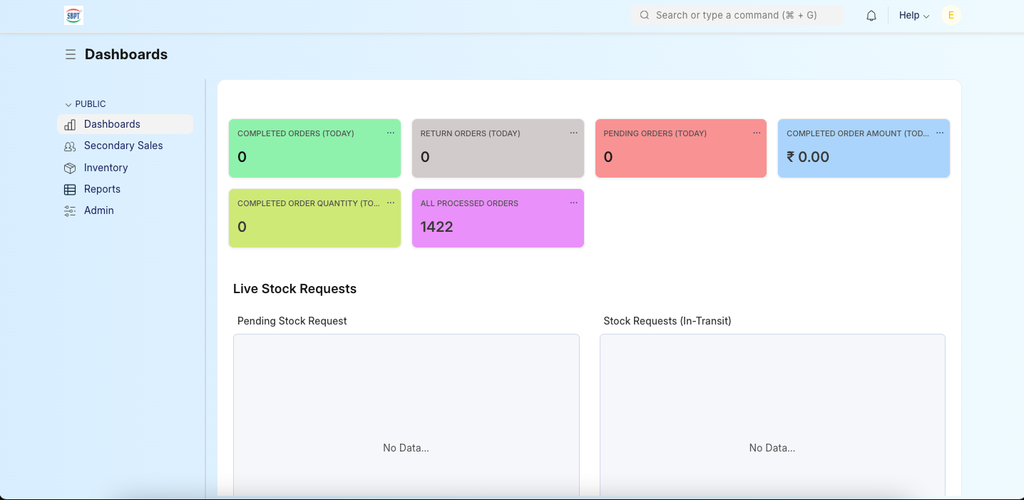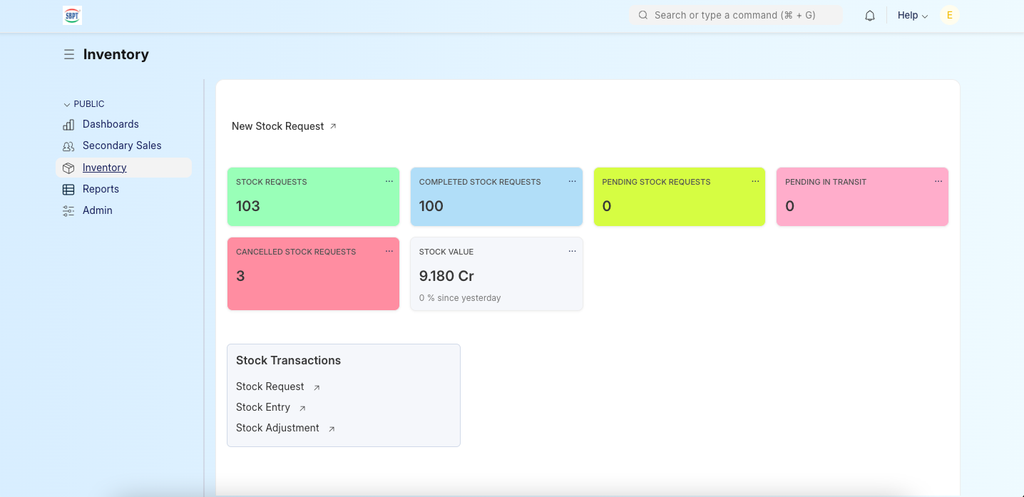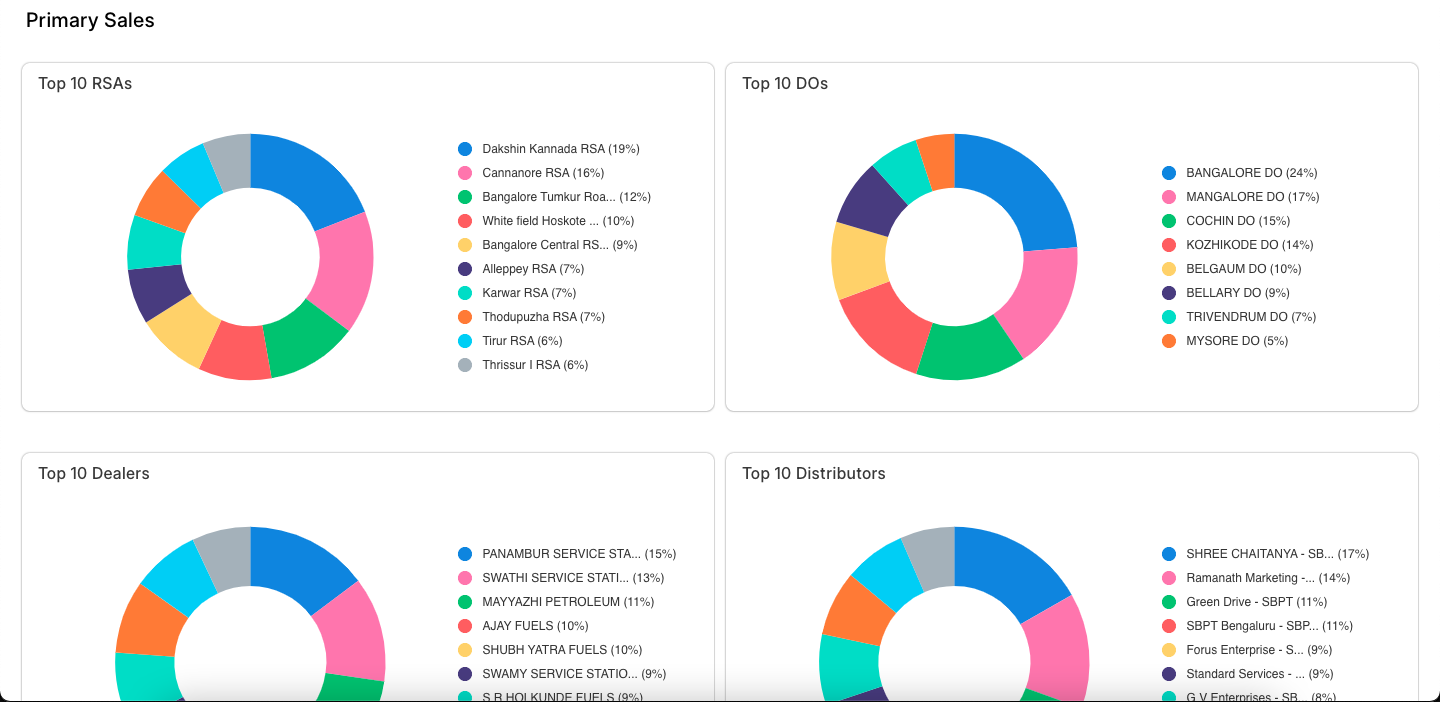Using ERPNext as a Modern Distributor Management System
A modern DMS built on ERPNext gives OEMs real-time visibility into distributor stock, secondary sales, and schemes—crucial for growth.
For brands that sell through a network of distributors and retailers, managing only the primary sales — from manufacturer to distributor — is no longer sufficient. To make informed decisions, optimize working capital, and drive channel growth, OEMs need real-time visibility into the secondary sales from distributors to retailers and their inventory positions.
This is where a Distributor Management System (DMS) becomes essential.

What is a DMS?
A DMS is a platform that helps OEMs manage and monitor their channel operations — including:
- Primary sales tracking, typically modeled as stock transfers to distributors.
- Secondary sales visibility, including invoices, product off-take, and scheme utilization.
- Inventory monitoring, across warehouses and geographies.
- Analytics and reporting, enabling real-time business decisions.
While ERP systems are finance-first and organization-centric, a DMS focuses on operational insights, distributor enablement, and downstream retail data. It’s commonly used in FMCG, consumer electronics, auto parts, and pharmaceutical industries.

Why We Used ERPNext as a Standalone DMS
OEM's have their core ERP (e.g., SAP) while distributors often use their own accounting tools (e.g., Tally). Instead of replacing these systems, we implemented ERPNext as a standalone DMS that operates independently from the OEM’s core ERP and Distributor's accounting system/ERP.
Using ERPNext, we enabled:
- Primary sales workflows through Material Requests and Stock Entries, without raising an invoice
- Distributor-wise inventory tracking, using dedicated virtual warehouses
- Secondary sales capture, via Sales Invoices and/or Delivery Notes
- Scheme management, by configuring price lists, discounts, loyalty programs, and promotions
- Self-service portals, enabling distributors to place Material Requests, check Inventory Balances, perform Secondary Sales operations
- Reports, Dashboards and KPIs, to monitor performance by region, product, distributor, and SKU
We used multi-layered approval workflows for Primary Sales to ensure sync with OEM's core ERP. This setup gave OEMs complete channel visibility without disrupting the distributor’s existing accounting processes.

E-commerce & Retail Execution
ERPNext also supports e-commerce use cases this enables the retailers to directly place orders via the e-commerce portal of the DMS. This feature combined with certain e-commerce specific discounts can help reduce the on-ground sales-force cost.
Features include:
- E-Commerce Store, fully integrated with stock and pricing
- Online ordering for retailers, with role-based access for different partners
- POS module, enabling real-time invoicing and retail order booking
- Retailer-specific pricing, bundling, and scheme application
- Cart-level discount rules, integrated with scheme management logic
- Marketplace integrations like ONDC, Amazon, etc.
These tools make ERPNext not just a DMS, but a channel-friendly order management solution.

Built-in Retailer Data Management
ERPNext offers native fields to manage and analyze retailer (customer) data effectively:
- Master Data - Like Address, Contact, Compliance Information, etc. for records and route planning
- Territory – Assign regions and sales reporting
- Sales Person – Link to field staff and assign sales targets
- Sales Partner – Track partner-level sales commissions and incentives
- Customer Group – Segment retailers (e.g., Modern Trade, Kirana, E-com)
- Custom Attributes – Create fields for retailer classification like store size, product affinity, etc.
Such segmentation helps in designing targeted schemes, customizing order limits, and mapping field operations.

Schemes and Loyalty Programs
Managing trade schemes and claims is critical in channel operations. ERPNext supports:
- Configurable pricing rules, for item-level or customer-segment-based offers
- Automatic scheme application, on both primary and secondary sales
- Loyalty programs, coupons, and credit note generation
- Performance-based rewards, integrated with the distributor and sales team dashboards
This ensures complete visibility into scheme utilization and makes compliance easier for both OEMs and distributors.
API-First Integration for a Connected Ecosystem
ERPNext’s REST API architecture made it seamless to integrate with:
- The OEM’s ERP (e.g., SAP, Oracle, etc.) for syncing invoices, materials, or schemes
- Distributors’ internal systems (e.g., Tally) to auto-sync secondary sales data
- Messaging platforms like WhatsApp or SMS for order placement or reminders
- Logistics APIs to enable dispatch visibility
- Payment gateways and credit management tools
With the API-first approach, ERPNext acts as a digital bridge across the channel — pulling insights from multiple systems into one unified view.
Final Word
ERPNext as a DMS offers OEMs a powerful yet affordable platform to digitize their channel operations. Whether the goal is to improve distributor coordination, automate scheme management, or gain retail visibility, ERPNext delivers the flexibility and scale required by modern distribution networks.
Its modular design, e-commerce readiness, and integration capability make it ideal for brands in FMCG, electronics, pharma, and other B2B2C sectors.
If your organization is planning to modernize your distribution stack, ERPNext is a strong candidate to consider — either as a standalone DMS or part of a broader transformation.
Let’s connect if you’d like to explore this implementation further.
CA Harsh Agrawal
Your Digital Transformation Coach
No comments yet. Login to start a new discussion Start a new discussion